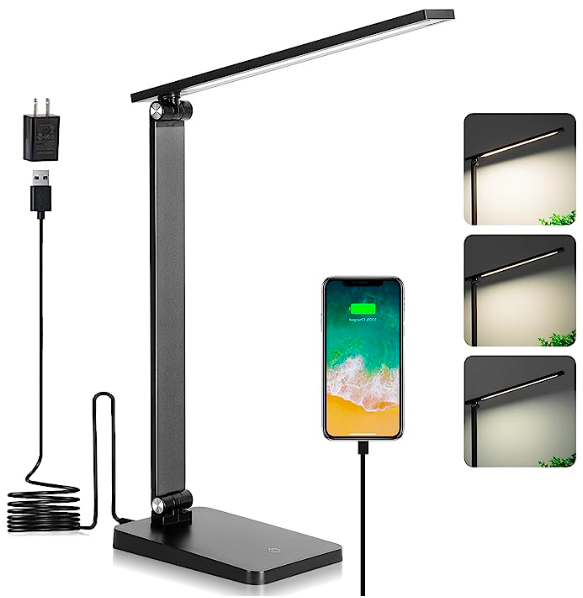What is the safest light for your eyes?
Soft, warm-toned lighting is generally considered best for the eyes, as this color of light can reduce eye fatigue and provide a comfortable environment. Specifically, dark yellow or warm white lighting is often considered the best choice for the eyes. Lighting of this color can create a warm and cozy atmosphere, helping to relax the eyes and increase comfort.
Natural white light is also a good choice for reading and working, as it provides clear illumination that helps maintain concentration, but make sure the light is soft and non-glaring.
In general, avoid overly dazzling white light or cold-toned light, and choose soft, warm-toned light that is more eye-friendly.
After researching light sources, we found that the best desk light source for your eyes is LED light source:
CRI is Color Rendering Index. 100 means as close to sunlight or a black-body radiation source as possible. You want as close to 100 as possible, although anything over 85 is good unless you are matching colors (sewing, painting, etc.).
Low or no flicker is good. LEDs tend to flicker less than CFL. Incandescents don’t flicker, but they give off -loads- of heat, which might make you uncomfortable.
None of these will damage your eyes. Some old-style ballast driven fluorescent lights gave off a flicker that some people find gives them eyestrain or headaches.
LED desk light has the following advantages, which are beneficial to protecting eyes:
1. Good light uniformity: LED desk lamps can provide uniform and soft light, avoid strong light spots or flickering, and help reduce eye fatigue.
2. Adjustable color temperature: Many LED desk lamps have an adjustable color temperature function. You can choose the appropriate color temperature according to your needs. For example, a warmer color temperature is suitable for relaxing at night, while a cooler color temperature is suitable for work that requires concentration.
3. Low blue light radiation: Some LED desk lamps use special technology to reduce blue light radiation, which helps reduce eye fatigue and protect vision.
4. Long life and energy saving: LED light source has the characteristics of long life and low energy consumption. Using LED desk lamp can reduce the trouble of frequent replacement of light bulbs, and is also beneficial to energy saving and environmental protection.
Therefore, choosing an LED table lamp with good light uniformity, adjustable color temperature, and low blue light radiation can better protect eye health.
What kind of LED desk lamp is good for your eyes?
A led desk lamp that is good for the eyes should have the following characteristics:
1. Good light uniformity: The light of the desk lamp should be uniform and soft, avoiding strong light spots or flickering to reduce eye fatigue.
2. Dimming function: It is best for the desk lamp to have a dimming function, which can adjust the brightness of the light as needed to adapt to different environments and usage scenarios.
3. Adjustable color temperature: The color temperature of the desk lamp should be adjustable. You can choose the appropriate color temperature according to your needs. For example, a warmer color temperature is suitable for relaxing at night, while a cooler color temperature is suitable for work that requires concentration.
4. Eye-protecting design: Some desk lamps have eye-protecting designs, such as using soft LED light sources to reduce blue light radiation and help reduce eye fatigue.
5. Adjust the direction of the light: Some desk lamps can adjust the direction and angle of the light to better illuminate the working or reading area and reduce eye strain.
In general, a desk lamp that is good for your eyes should be able to provide soft, even, and adjustable light while minimizing eye irritation and fatigue.


